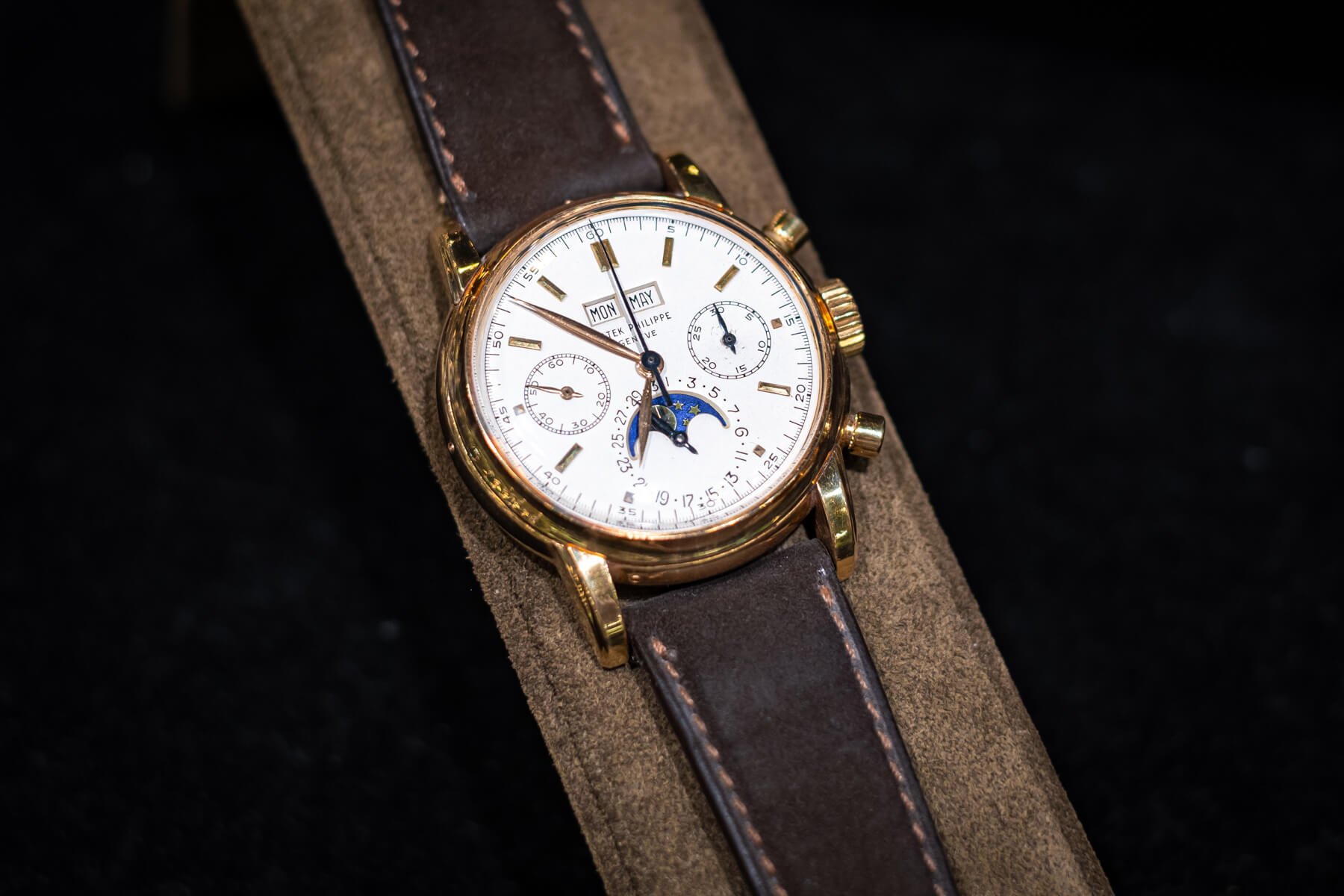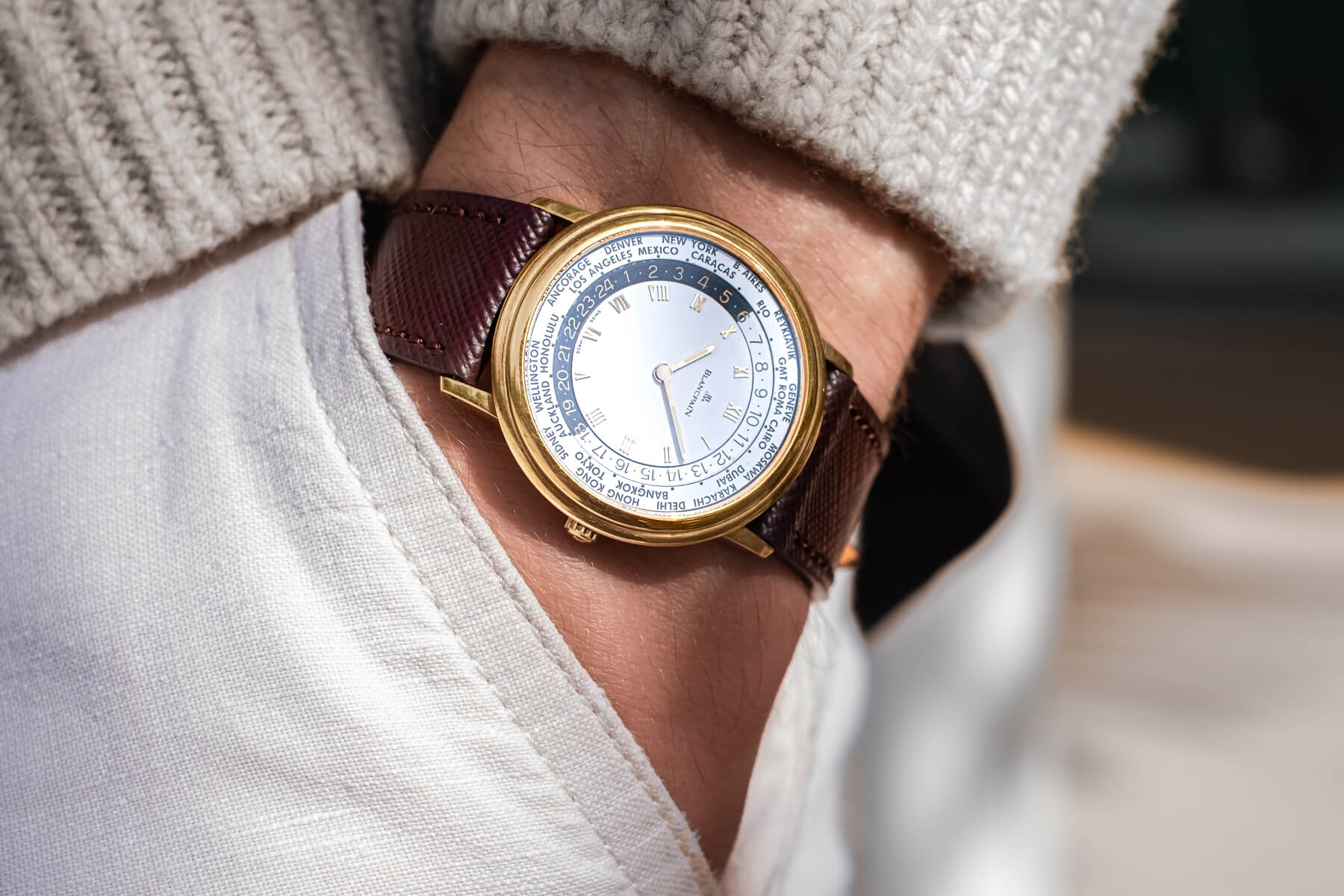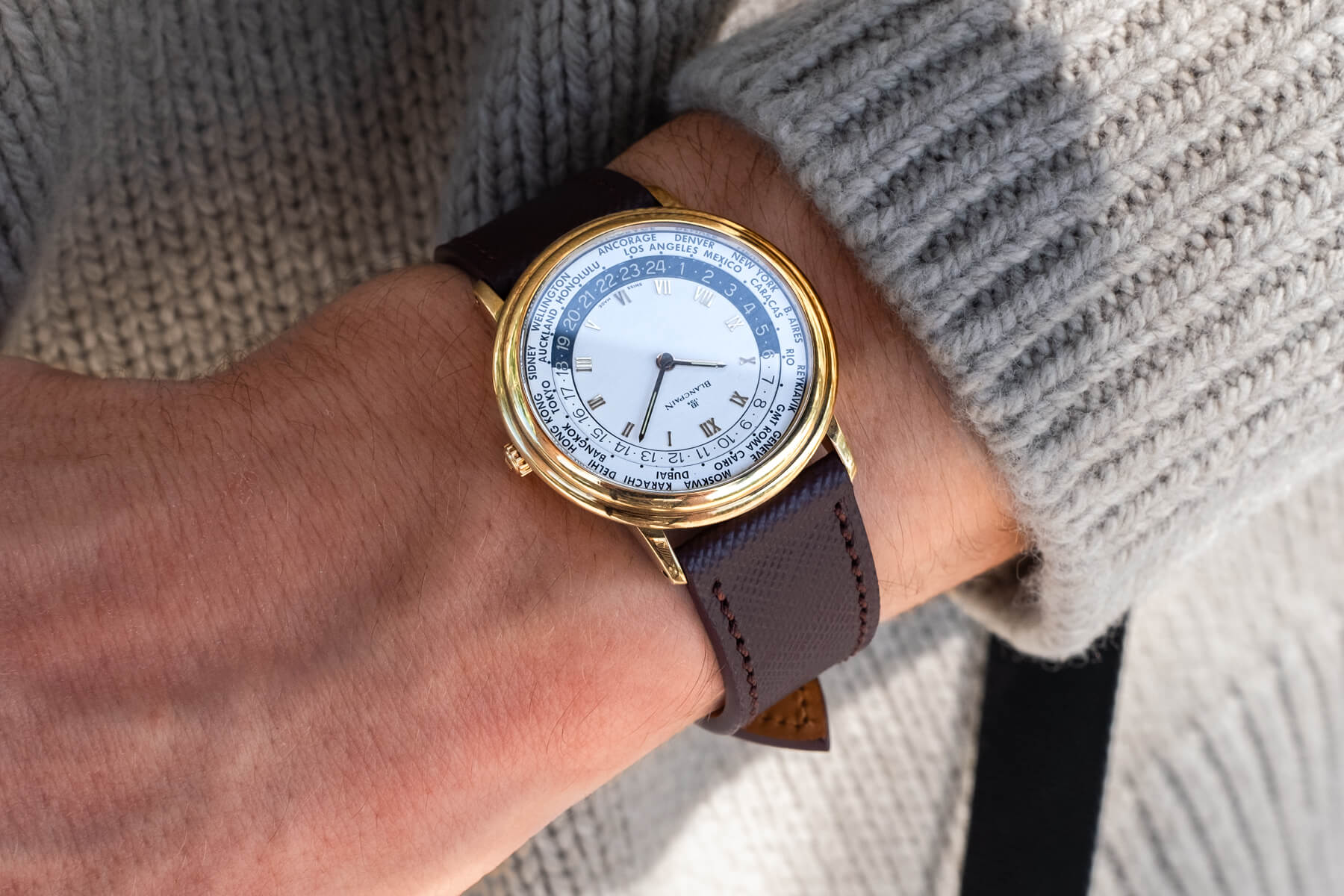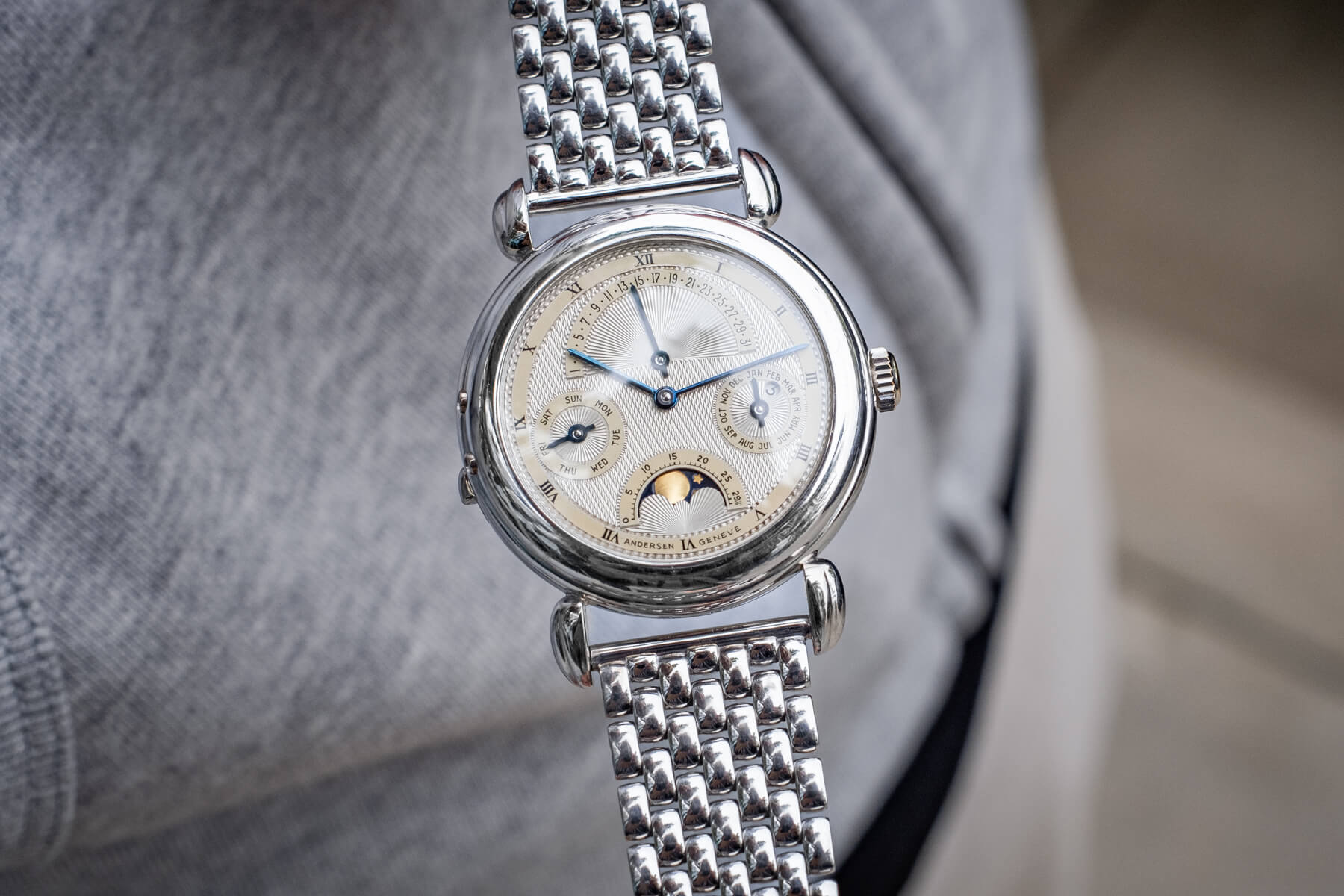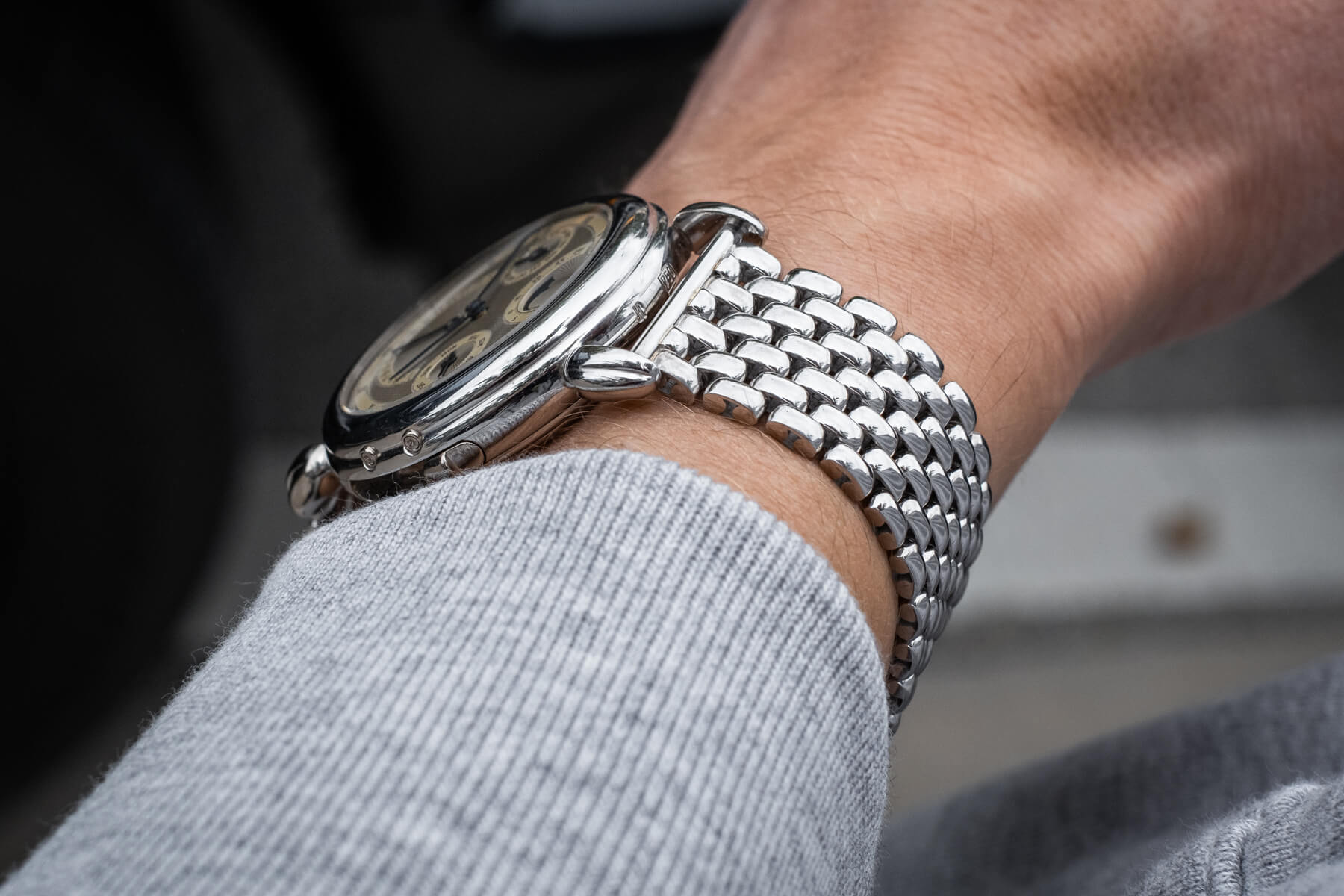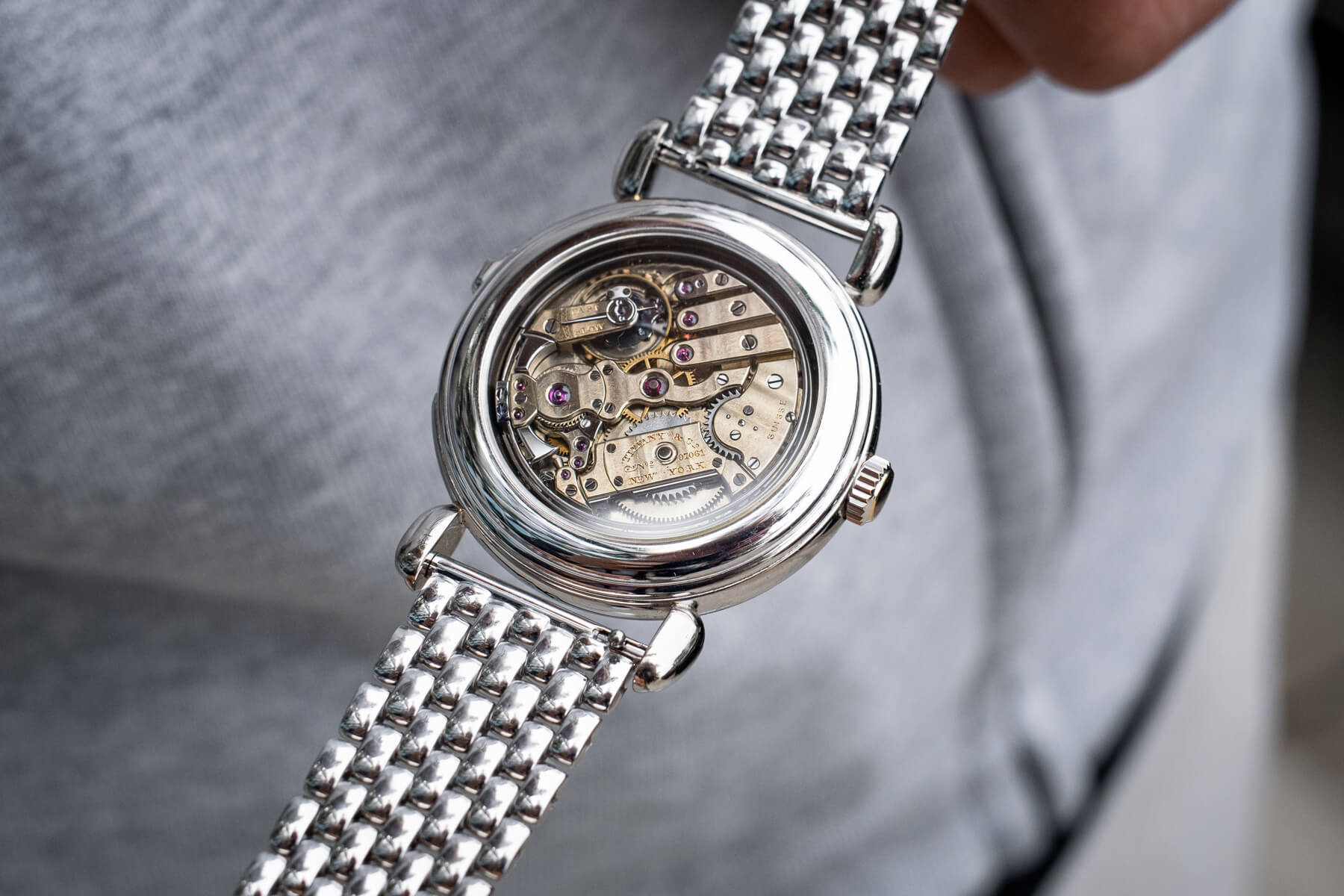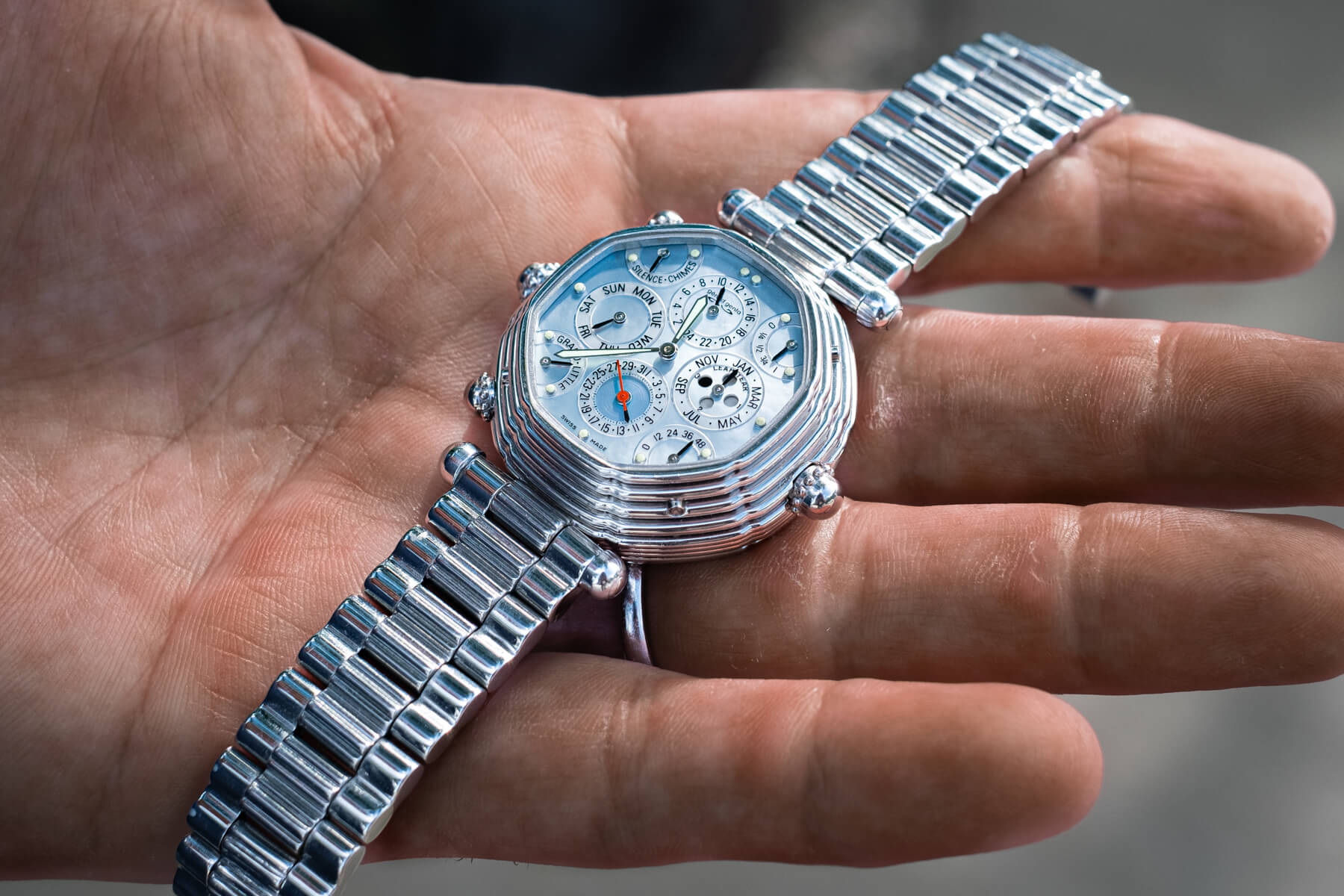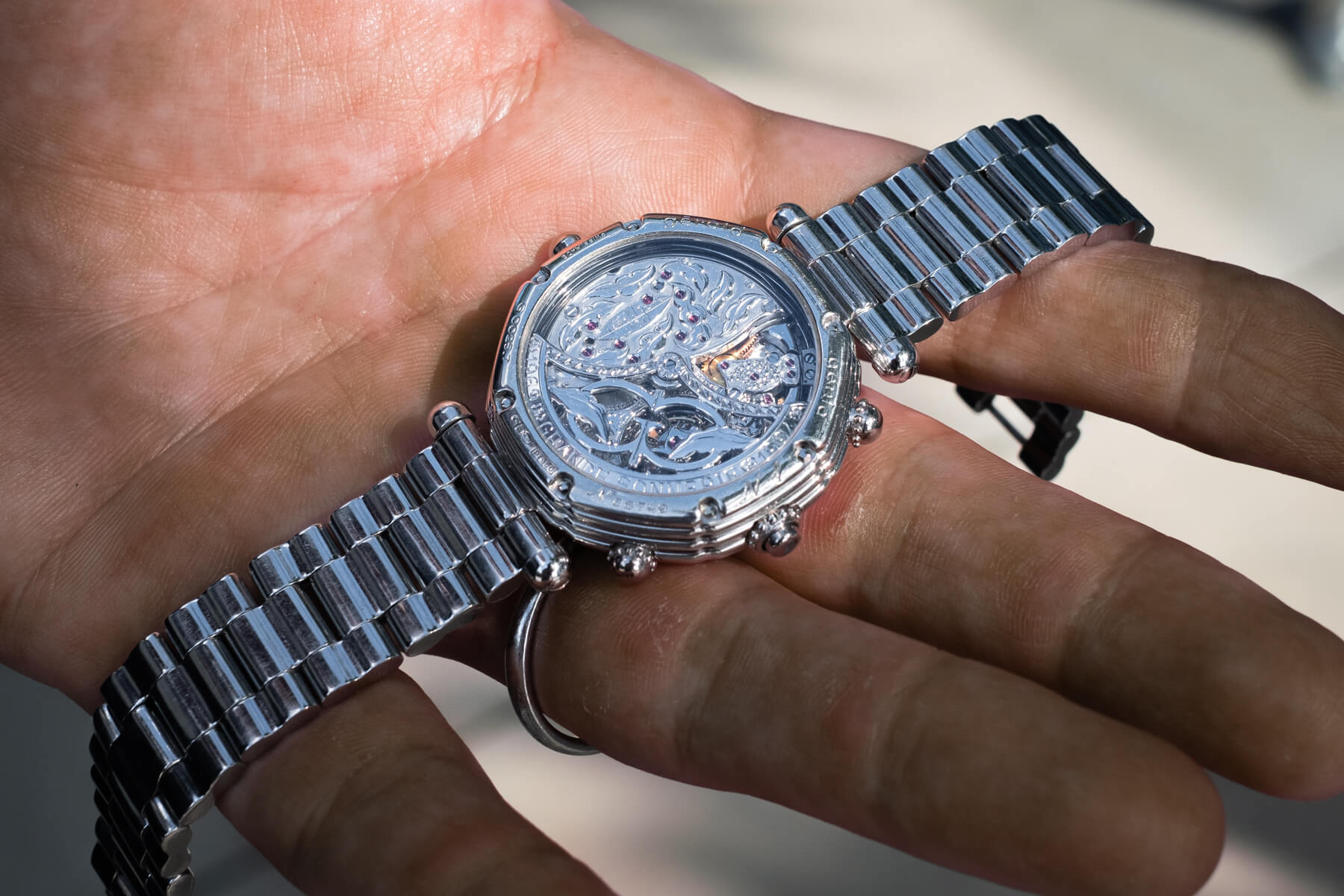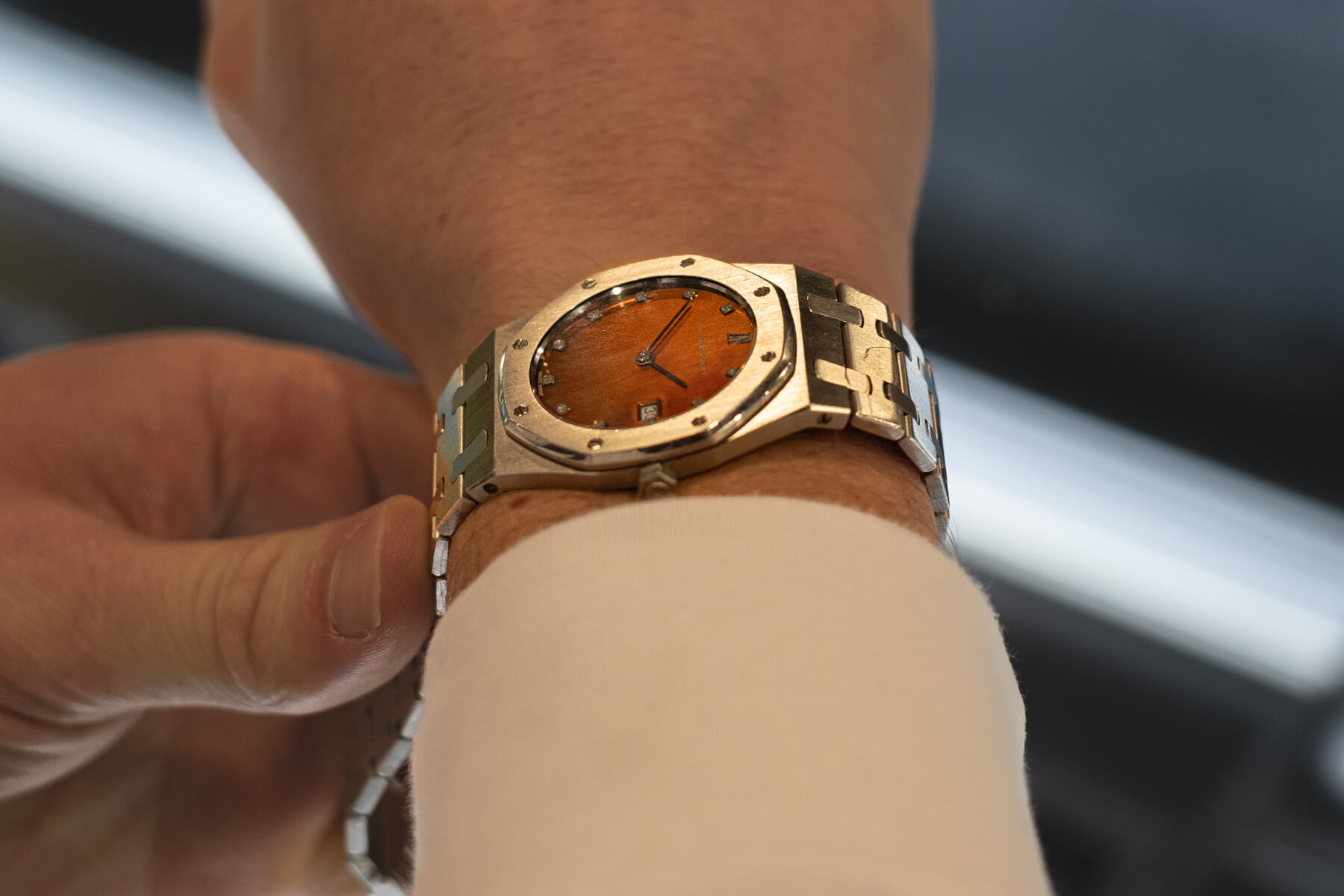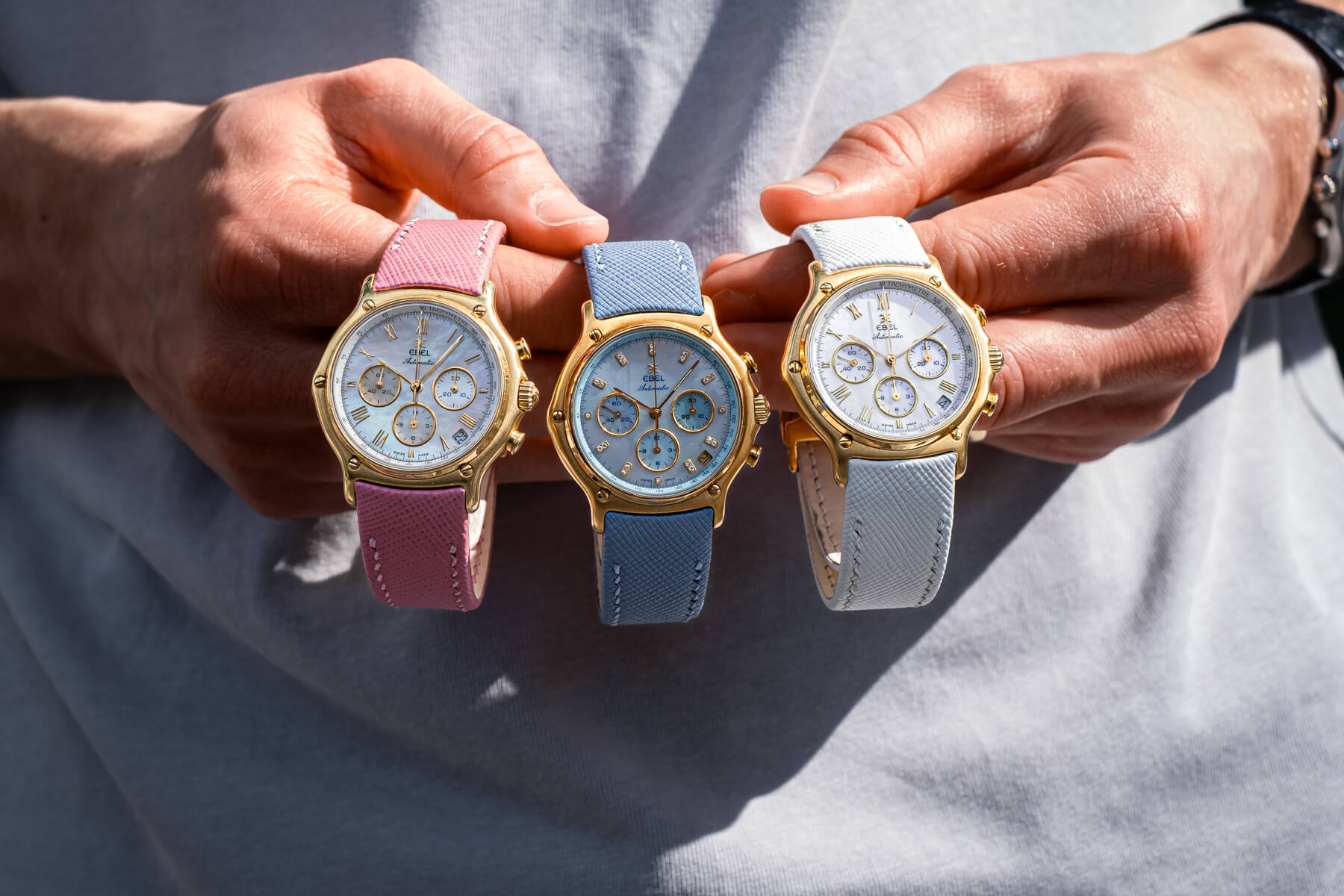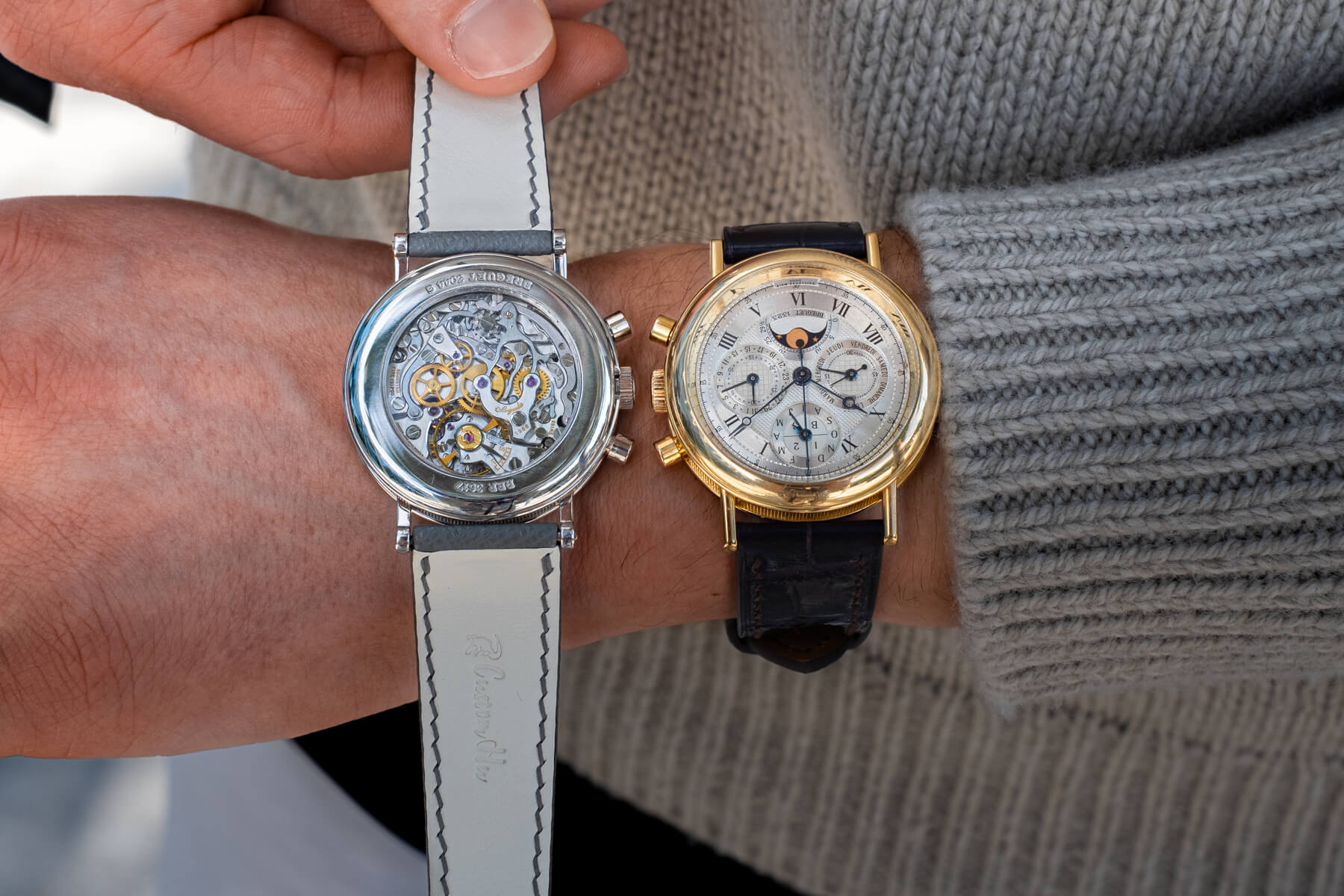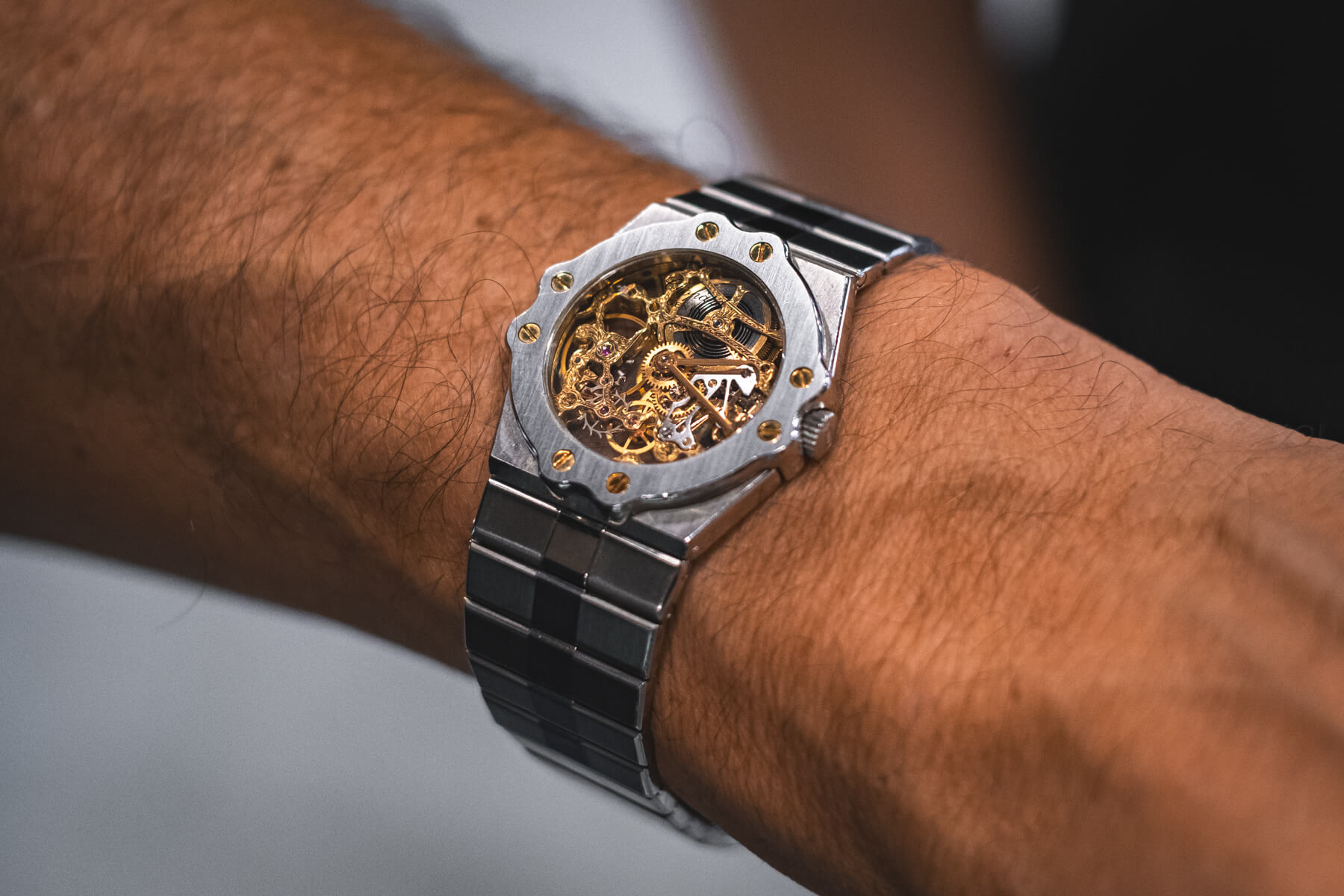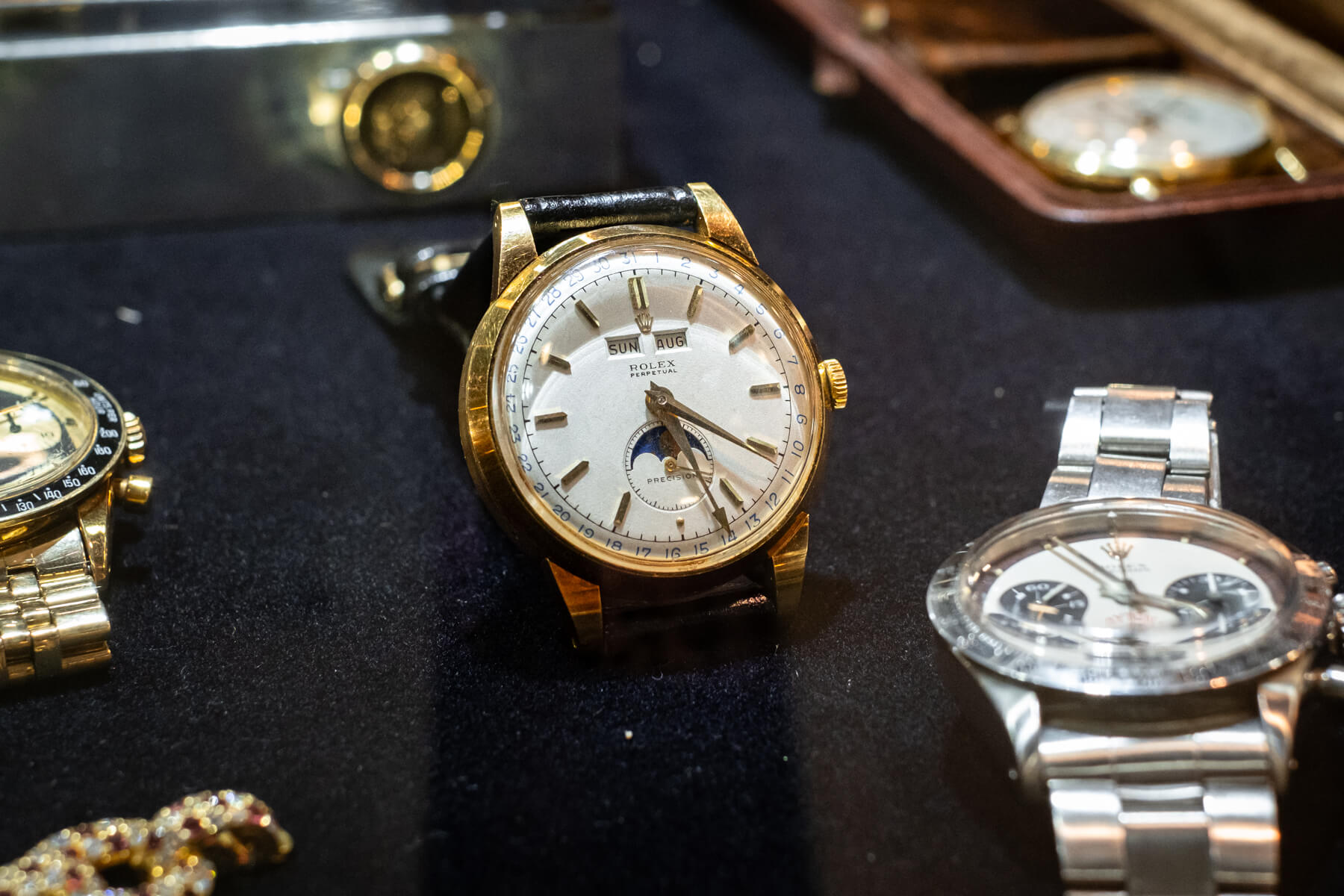Five Of The Best Watches At The Original Miami Beach Antique Show 2024
Most major watch shows center around brands and new releases, leaving the pre-owned and vintage side of the industry to run smaller, typically localized gatherings. However, a few shows break this rule, with one, the Original Miami Beach Antique Show, taking place in the colossal Miami Beach Convention Center. Held every January, the show attracts visitors and exhibitors from across the globe, and every year, my internal feeling of FOMO increases little by little once Instagram begins to fill with behind-the-scenes snaps and watch finds.
The reason? The watches at the show are some of the rarest and most coveted examples on the market. The show attracts an international audience, with industry exhibitors including but not limited to Roy & Sacha Davidoff, Monaco Legend Group, Loupe This, The Keystone, Luxury Bazaar, Matthew Bain, Menta Watches, Alfredo Paramico, Lunar Oyster, and The Watch Boutique. In short, it’s the place to be.
The Original Miami Beach Antique Show 2024
I’ve been going to watch shows for many years now. None, however, have focused solely on the vintage and pre-owned side of the industry. Well, that all changed in January, with four days scheduled into the diary to head out to the sun-kissed streets of Miami to get a real sense of what the king of antique shows and its attendees were about.
To experience everything the show had to offer through my eyes, you’ll have to head over to my photo report at the end. Before you do, though, stick around as I run through five of the best watches I’m still thinking about today. And let me tell you, selecting just five was no easy feat.
The Patek Philippe Perpetual Calendar Chronograph 2499
Let’s kick things off right away with a much-decorated Patek reference, the 2499. To many, it’s the most beautiful. Others call it the greatest wristwatch ever created. But to everyone, its significance is undeniable. To understand this perpetual calendar chronograph, we must take a step back briefly and look at the precursor, the 1518. First released in 1941, the 1518 was a groundbreaking piece. It marked the first time a manufacturer had fit such complications into a case measuring just 35mm wide. And let’s not forget that Patek Philippe did this in the middle of Europe in the 1940s — talk about resilience. Over 13 years, the brand produced 281 examples, averaging approximately 21 pieces a year.
The 2499, on the other hand, debuted in 1950 and remained in production for a staggering 35 years until 1985. But Patek only made 349 examples — about 10 pieces a year. During its production span, there were four series of this reference. This example from Monaco Legend Group is a later one, distinguished by its lack of a tachymeter scale. It’s rendered in yellow gold and measures 37.5mm in diameter. Having seen this piece in the flesh, it’s easy to understand why collectors revere it so much. The proportions and exterior are just perfection, especially the lightly stepped lugs that transition wonderfully into the bezel’s edge. The configuration of the dial, the poised leaf handset, and its striking moonphase display… Sometimes the hype is indeed very real.
Pinnacles
Despite the other remarkable pieces at the show, and regardless of their record of sourcing and selling easily some of the most incredible watches in history, speaking with the members of the Monaco Legend Group team, it was evident the importance of having a 2499 wasn’t lost on them. Everyone is always looking for the next great watch reference or brand to take over the collecting scene. However, stopping and reminding ourselves why the pinnacles are the pinnacles is quite often enough.
The cliché classics are precisely that for a reason. Before I go ahead and highlight some even rarer pieces, let’s take this moment to appreciate this certified icon.
The Blancpain Worldtime prototype
Next, we have a first in a few ways. Dating from the 1990s, this rather exceptional Blancpain model is almost certainly one you’ve never seen before for one reason: it’s a prototype that never made it to production. On the case back, it carries a “No. 3” engraving, although it is currently believed to be the only one known. If it had made it out of the prototype stage, this would have been a seriously unassuming traveler, and today, it would surely be a favorite of the collecting community.
Kept to a sophisticated minimum, this Worldtime is one of the purest examples of the luxe traveling complication, and in this potentially unique execution, it hides a mechanical wonder. Powering this fully functional watch is a movement by Svend Andersen; you know, the man behind Andersen Genève.
And the second first that I alluded to at the start? Alfredo Paramico owns it, making it one of three of his watches that I’ll feature today.
Born in Italy but based in Miami, Alfredo is one of the most prominent collectors of the rarest watches ever produced. If you’ve followed along and seen the top lots at auction seasons, it’s very likely that Alfredo either has a history with those watches or is about to start one. When it came to the show, he was an outlier for his cabinets full of museum-worthy examples of neo-vintage watches, none of which were for sale. His collection deserves a dedicated article, but a crowd-pleasing highlight of the show was the next piece, a very important Andersen Genève watch.
The unique Andersen Genève Quantième Perpétuel Minute Repeater
Commissioned in 1984 by a Japanese client, what you’re looking at is a perpetual calendar (Quantième Perpétuel) from Andersen Genève. However, this example has layers of special stacked on each other. The first is its case, crafted from 18K white gold, with commanding teardrop lugs. Sven Andersen approached expert case maker Jean-Pierre Hagmann (note the JP engraving on the case) to create this “waterproof” case.
Having created cases for manufacturers such as Rolex, Patek Philippe, Audemars Piguet, Longines, and Jaeger-LeCoultre, the 82-year-old Hagmann remains among the most respected figures in the watch industry today. Rexhep Rexhepi of Akrivia even convinced him to come out of retirement at 78 to create Akrivia cases, but that’s a story for another day.
Externally, this piece is a real sensation executed with tradition and originality. It makes for a perfect pairing with the Patek Philippe minute-repeating caliber inside, which hails from the 1920s and bears a Tiffany & Co. signature.
It’s hard to determine which element of this watch is the pièce de résistance, but Andersen’s champagne guilloché dial work brings all aspects together perfectly. Better still, Alfredo owns endless paperwork and documents related to the watch, from communications between the first owner and Sven Andersen to even hand drawings by Hagmann himself.
I’m not alone in saying that this was my highlight of the show.
Gérald Genta Grande Sonnerie No.1
This is where the craziness of the show peaked. This, the final of Alfredo’s collection to make my top five, was easily the wildest watch of the event. What you’re looking at is the Gérald Genta Grande Sonnerie from 1994. Initially released to mark 25 years of the eponymous manufacture, this watch was known as the most complex in the world for many years. And its original retail price? A cool $1 million.
“In 1994, if you were a monarch, billionaire, or even mere millionaire, and you wanted to buy the ultimate, ultimate, wristwatch, it would probably have been a GG Grande Sonnerie,” says the Gérald Genta Heritage website.
To put things in perspective, what you’re looking at is a watch with:
- Automatic perpetual calendar
- Tourbillon
- Power reserve indicator for both the chiming indicators and timekeeping
- 24-hour indicator
- Minute repeater with both grande and petite sonnerie
- Westminster chimes
- Dual time
- Auxiliary sectors with silent mode
All of that resides in a case 15mm thick (sure, that’s not ultrathin, but considering there are some dive watches that are just as thick, Genta did okay with this one). Amazingly, there are a few more talking points because what’s left of the dial that isn’t eight sub-registers is a dreamy mother-of-pearl. That quadruple-step case is rendered in platinum and is complete with a unique platinum bracelet. Speaking of “unique,” this is not only the first Genta Grande Sonnerie (No. 1), but its platinum realization also makes it a pièce unique.
On the collector
Alfredo has told the story in many places online about his long-term hunt for this watch and how he first saw it on the front cover of Le Collezioni Orologi Meccanici Più Prestigiosi Del Mondo magazine at 26. He has also publicly stated that when he acquired this watch at auction, it wasn’t working and required a service. That service took two years to complete and set him back $75,500.
Many watches are associated with Alfredo, but when I think of him as a collector, I think of this crazy piece. If you want to see more from him, check out Alfredo on Instagram here.
The Audemars Piguet Royal Oak 56175 in platinum
In complete mechanical contrast to the previous two pieces, closing out my top-five list had to be this Royal Oak. At just 33mm wide, it’s more reserved in proportions than the modern references. Although its quartz movement isn’t a shining example of Audemars Piguet’s longstanding mechanical prowess, this watch is all about the dial and the exterior.
Realized in platinum, this reference 56175 features a rather unique factory diamond dial. Spotted at the Matthew Bain stand, after 30 years of life, the dial has turned an unusual tone that shifts from a deep black to a copper-like hue, depending on the light. In a cavernous convention center filled with mechanical spectacles, this thing was a real heavy hitter that punched a ton above its weight.
What’s also wonderful about the dial is how typography is kept to a minimum. There’s no seconds track whatsoever, just diamond markers, a date complication, pencil hands, and Audemars Piguet branding.
By drawing the attention fully to the case and dial, this is a particular instance that poetically embodies the original sentiment of Genta’s thoughtful design. In some ways, it is a sleeper hit for me.
Final thoughts on the show
Throughout the show and my list, there’s a consistent theme connecting most of the watches — neo-vintage. A current hot topic within the collector community is watches from the 1980s, 1990s, and early 2000s and how newly found vintage pieces are an emerging market. However, what makes this point feel all the more accurate is how these pieces weren’t just in glass cabinets but also what many attendees wore at the show.
I saw an Audemars Piguet Star Wheel, Cartier Santos Galbée in yellow gold, Chopard St. Moritz Skeleton, Blancpain Leman Perpetual Calendar Chronograph, numerous Gérald Genta pieces, the IWC Da Vinci, and many 1990s Breguet watches. Collectors are embracing the 1980s and 1990s, not just dealers.
Don’t let the quest for finding the perfect watch get in the way of owning a great one
The philosophy “buy what you love” isn’t exactly a recent epiphany. We have all heard that phrase repeatedly. But being at the show and around collectors of the weird and wonderful reminded me of the importance of the sentiment. In recent years, we’re starting to shift from democratizing watch taste in favor of more self-expression. For many, it’s always been that way, but everyone I bumped into was fixated on an entirely different obscure reference than the other.
You’ll have to head over to Watch Brothers London here to check out the full rundown of everything I saw, including some noteworthy pieces, like the Patek 2438 (to me, possibly the ultimate watch — thanks for asking), a Rolex Day-Date “Eye of Horus,” Rolex “Stelline” triple calendar, Omega Regulator prototype, and the list goes on.
Do let me know what your favorites are from the five watches selected and why in the comments!
All images by Tim Vaux. Find him on Instagram here.


